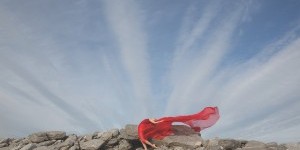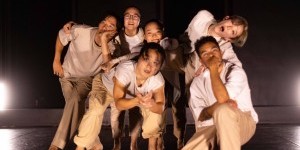AUDIENCE REVIEW: Martha Graham Dance Company

Company:
Martha Graham Dance Company
Performance Date:
December 10, 2020
Freeform Review:
The program on December 10th was a beautiful journey of visual expression from an ominous void to a magnetic joy. Martha Graham Dance Company, known to portray the push and pull of our body, mind and heart, delved into the nature of being. The dancers on stage performed solos, and duets without an over calculated narrative. Xin Ying in Lamentation and an excerpt from Appalachian Spring, by Lloyd Knight, were wonderful seen next to archival images of past performances. These dances were terrific in capturing an arch, a timeless valued form. Like sunrise to sunset, a mood swept across the stage in a decadence of energy, and grounding that all can connect to in the movement from solo to duet.
In Lamentation, by Ying, the classical composition was sculpturally moving in its expression of mourning. Constrained and isolating, the dancer stretched in every which way, and it created a moving sculptural form. In the post talk, Janet Eilber, artistic director, spoke to the shared feeling of grief and how we all experience this feeling. Dramatic changes to the human proportions through the fabric stretched out by the dancer show an interior struggle with death. There was a birth of something agonzing inside, and we watch the dancer’s attempt to fill the dark void.
In the next piece, Appalachian Spring by Knight, was enticing for coming out of depression, one might say it is a happy winter. This excerpt teased us with the nature filled orchestration of Arron Copeland. Inspired by the music it overwhelmed us with happiness. The contradiction might be playing with the costume of an all black suite. It paired archetypical 18th century fashion with the movement of unrelenting humanness. Though, the mood took away any certain kind of fashion. Spirited and striped of conventions, the turns and revolving composition showed nature as uncontrollable.
Satyrical Festival Song, weighed heavily on the side of metamorphosis. Like an epic, it ran the course of fantasy, and like in the enlightened period, or a new beginning there was a growing passion to learn, experience adventure. It is not without danger from deceiving forces of chaos lurking, preying on natures’ vulnerable creations. Ying appears naive, cautious, and even frightened in this twist of fate.
How might we experience this in our own current times? A delayed response metamorphosed into dramatic fears of the spread of Covid-19? How will we ever go back to normal? The festival attitude just seems to take full control of our insights, turning everything upside down, and we can either backtrack to the way things were or find a new normal?
Satyrical Festival Song was certain to raise our attention to the colorful and likable mystery of Graham’s explorations of modern dance. A comedic solo from 1932, may adapt to our own times in a new mode of investigating a current collective energy. One that is not stuck inside, but a folly new discovery of the self. It offered many signs and signifiers that ushered in a new vision for the whimsical.
The final dance, Dark Meadow Suite performed by Ying and Knight, was when they finally came together for a duet. They danced before a passionate red backdrop. Separately, each dance as a solo imagined an aura, energy in the air, that gave independence and strength to each.
Knight removed the bondages of 18th century fashion, in his own skin, he shined a light for his partner by merely reflecting the shimmering light. Rather than overshadowing the other dancer there was nuance.
Ying moved incessantly into many beautiful moments, it appeared to be a walk of some divine creature. A saucy attitude was sure to make you wink, but not to miss Ying’s next move.
Dark Meadow Suite was a duet that made a point of the overlapping partners. Behind Ying was always a shadow of Lloyd. They became one, and so a mix of gender and power exchanged for an enchanting creature united. A dance of unique magnetism with a push and pull in opposite directions that created such a force of beauty. As the dancers leaned on one another the structure which was prominent was that there is no darkness without light, light without darkness, and so forth there was a rip in time and space. It gave meaning to the attraction of two opposites. Positive and negative, blurred outlines merged to coincide within the other as one.
Author:
Chuck Schultz
Website:
chschulk.wix.com/review
Photo Credit:
Chuck Schultz






